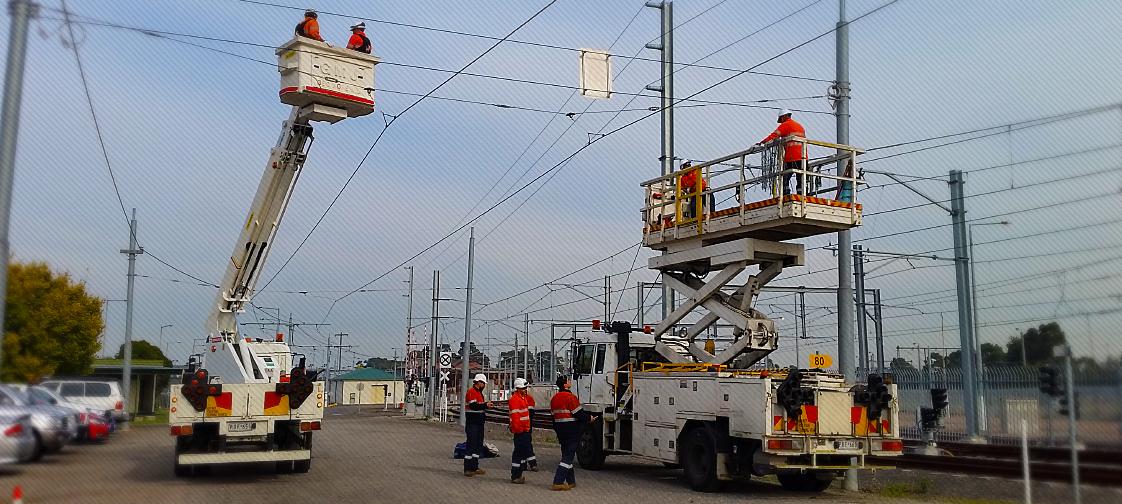- About Us
- What we do
- Safety
- Our People & Culture
- Powered By RelyOn
- Management
- Clients
- Case Studies
- ElectraNet – Asset Access
- Managing Contractor Compliance For a Network Owner
- Audit for HV Site Safe Access
- High Voltage Operator Contextualised Courseware
- Rail Network Electrical Safety Audit
- Building Qualifications for Rail Skills Shortage
- Building Team Diversity for Success
- Cable Jointing Apprenticeships in 2020 with COVID_19
- Micro-Short Videos: A Powerful Tool for Learning
- Supporting our Community – William Thomson Scholarship
- Auspice Partnership for New Light Rail Operator
- ElectraNet - A state-wide accreditation program for electrical safe access
- Transmission Lineworkers – Skills shortage
- ElectraNet – HV Switching
- Upgrading Qualifications in the Electrical Supply Industry
- A Collaboration with TransGrid for Transmission Line Apprentices
- Alinta Energy - Recognises Skills & Experience
- DPTI – Electrified Rail Training
- Large Scale Generators Forum
- Vestas - Electrical Safety Management System
- Australian Energy Council - ARC Flash Guidance Publication
- Yarra Trams - Electrical Safety Rules Curriculum Design and Delivery
- APA – Upskilling Operators to Interface with AEMO
- First Response Training
- Auspice with AGL Energy
- Origin Energy – Recognition of Prior Learning Program
- SA Water implementing regular assessment of safe work practices
- Auspice with AGL Torrens Island for High Voltage Operations Training
- BOP Maintenance Plan for Worley’s Crowlands Wind Farm
- Toll’s HV safe access procedures for new ship to shore
- NKT partnership delivers cable jointing awareness program
- Network Control Rooms - using video to demonstrate field switching practices
- Case Study 9
- Evo Energy – Electrical Worker Competency Framework Review
- New ESV licensing regime for lineworkers
- Incident investigation to determine cause of wind turbine electrical plant failure
- Latest News
- Contact Us
- Sectors
- Courses
- Search All Courses
- Courses by Sector
- Courses at Hoxton Park
- GWO Training - Wind Energy Industry
- Vegetation Management
- Transmission Lineworker
- Renewable Energy Training
- High Voltage & electrical safe access
- Victorian Electricity Supply Industry
- South Australia – ElectraNet
- Terminal and Zone substations
- Rail – Trams and Trains
- Cable Jointing
- Boiler and Turbine Operations
- ESI Generation Qualifications
- Electricity Supply Industry Qualifications
- Power Plant Operations
- Control Room Operations
- First Response, First Aid
- Mining, Defence, HV Customers & Utilities
- Oil & Gas
- Metro Trains Melbourne - Authorised Applicant
- General Public Training Courses
- Qualifications
- Blended Learning
- Engineering Consultancy
- Learning Services
- Resources
- Logins
Rail Network Electrical Safety Audit
Rail Network Electrical Safety Audit

Rail Network Electrical Safety Audit
Background
Suburban rail networks are complex. They often contain a mix of different technologies and many significant hazards. Staff working on or around these networks need clear and detailed but practical safety rules, procedures and accountabilities in order to work safely and do their jobs well.
Our Client operates an electrified rail network for suburban passenger services. As part of its ongoing risk assessment, the network's leadership team sought an external audit of the electrical risks to the business.
Our Role
The review, conducted by our experienced electrical engineers, used an audit methodology and included extensive interviews with key stakeholders within the organisation along with an analysis of key documents such as the Client's High and Low Voltage Electrical Safety Rules, Health and Safety Policy and Procedures, Risk Assessments, the organisational structure and position descriptions relevant to electrical work.
After concluding the data collection and analysis, Thomson Bridge developed a report presenting a clear, detailed and benchmarked view of the processes and systems keeping workers safe around the significant electrical hazards of the network. This report combined the detailed data gathering of the review with Thomson Bridge's decades of High Voltage experience to identify where best or leading practice was being applied, where the key risks were, and where priorities for improvement of the system should be. This report was presented to senior managers within the client organisation who accepted all findings and recommendations and responded swiftly to implement changes.
While the findings were on balance positive, and it was recognised that the network had procedures in place for the safe access to its electrical network that were compliant with relevant regulations and standards, a key finding was that many key procedures were written in a manner which assumed a linear process which did not always adequately deal with deviation or issues that arise from real world situations. Also, the organisational structure and its roles were ambiguous in respect to responsibility for the electrical network and open to interpretation.
Changes implemented on the basis of the report include the appointment of a senior manager to the role of Operating Authority, and a clear line of delegation to appropriately trained staff. The Electrical Safety Manual was also re-formatted to ensure that the responsibilities outlined were clear and matched the intended work processes.
Project Details
- Client: Rail Network owner
- Industry: Rail
- Our role: A health check of electrical risks to a transport network
- Outcome: A positive report card and the opportunity to refine and clarrify roles of responsibility and delegation

